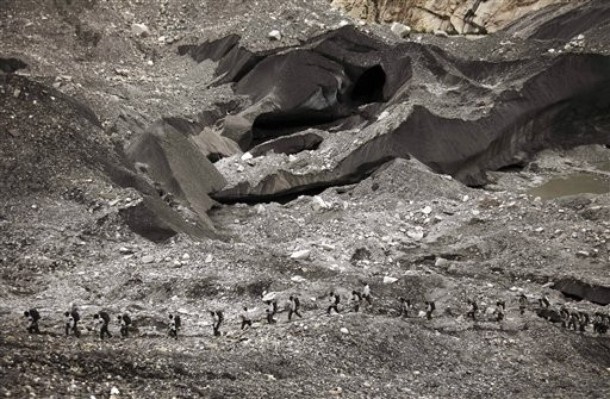India and Pakistan have been engaged in military-level Track 2 talks for the past 12 months, with the delegates of the two sides meeting in Dubai, Bangkok and finally in Lahore in September this year. Smaller “sub-group” meetings in Chiang Mai (Thailand) and Palo Alto (California) have also featured in the Track 2 process. A number of issues — among them Siachen, Sir Creek, confidence-building measures — were discussed at the meetings, where my participation as part of the Indian delegation brings me to share my take on the issue of demilitarisation of Siachen.
There are three aspects to the Siachen issue. The first, in my opinion, needs transparent action at the government level. The first aspect is why should India, in the first place, agree to any demilitarisation of Siachen when it holds the dominating high ground on Saltoro Ridge and can command the strategic region, thus preventing a China-Pakistan link up in the region? Why should India vacate Siachen when Indian Parliament has passed a resolution that the entire Jammu & Kashmir (including Pakistan-occupied Kashmir) is Indian territory?
Why should India repeat the case of returning Haji Pir Pass when there is a strong possibility that the Pakistan Army will reoccupy the Saltoro Ridge and we will never be able to take it back again? India has lost a total of 814 soldiers in Siachen since 1984, but now due to superior facilities and a better economy, we can remain there indefinitely. So why should the sacrifices of our soldiers be forgotten, and why should we vacate Saltoro Ridge when we hold all the cards? Why should India not link Siachen to other issues like Pakistan-sponsored terrorism? Given its sensitive and emotive nature, I feel that the Indian government would need to answer the question why.
The second aspect is when should India agree to demilitarisation of Siachen? Here also the Track 2 discussed the political instability and the possibility of early elections looming in India and Pakistan. This question of when can only be dealt with by the next government at the Centre.
The third aspect, which Track 2 discussed and finally agreed to a proposal, is how to demilitarise Siachen?
The official Indian stand on delineation and authentication is well known, and the Track 2 proposal has covered these aspects. The Pakistani team were worried that if they agreed to authentication of the AGPL (Actual Ground Position Line), India may stop further discussions on Siachen, once the authentication had been carried out. Hence, an “integrated” approach was agreed to.
The Track 2 proposals for “how to demilitarise Siachen” are “part of the comprehensive resolution of the Siachen dispute, and both sides should agree to withdraw from the conflict area while retaining the option of punitive action should the other side renege on the commitments”. The Track 2, Lahore “Siachen Proposal” of September 25, 2012, says “the following clear package of integrated and interlinked stipulations were laid down for the demilitarisation of the area and delineation of the line”:
- Setting up a joint commission to delineate the line beyond NJ 9842, consistent with existing arrangements
- The present ground positions would be jointly recorded and the records exchanged
- The determination of the places to which redeployment would be affected would be jointly agreed
- Disengagement and demilitarisation would occur in accordance with a mutually acceptable timeframe. (Esta-blishment of a joint working group has been proposed, in a separate annexure.)
- Prior to withdrawal, each side will undertake to remove munitions and other military equipment and waste from its area of control
- Ongoing cooperative monitoring of these activities and the resulting demilitarised zone would be agreed to for ensuring transparency.
The concluding paragraph of the Track 2 proposal reads: “In keeping with the Simla Agreement and the Lahore Declaration, both sides should undertake that resolution of this issue is a bilateral matter and that there will be no change in the status of the area, and also that no personnel of any third country will be permitted within it, unless cleared by the two countries jointly.”
I have written earlier that Track 2 is not a magic wand, which can solve complicated problems between India and Pakistan. It can only provide some possible solutions for the consideration of Track 1 discussions. The proposals on how to demilitarise Siachen are doable, provided the Indian government answers the questions of why and when.
The Track 2 teams of both countries have done their job, and now it is up to the two governments to make the next move.
Vice Admiral AK Singh was a member of the India-Pakistan Military Dialogue organized by the South Asia Center and the University of Ottawa in Lahore last month. This piece was originally published in the Deccan Chronicle.
Image: indiansiachenbasecamp.jpg
